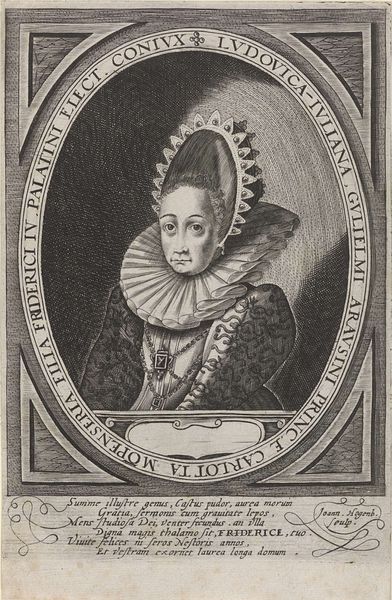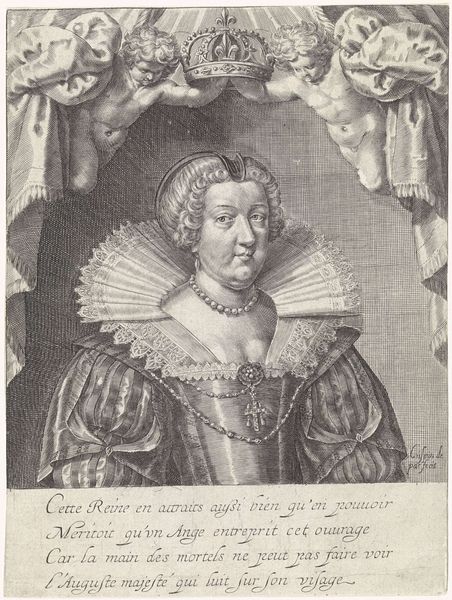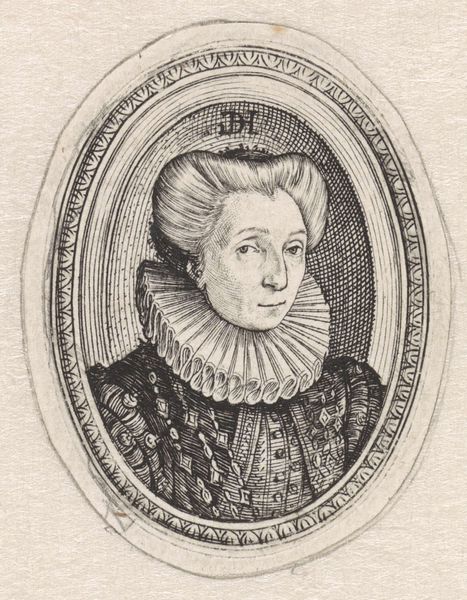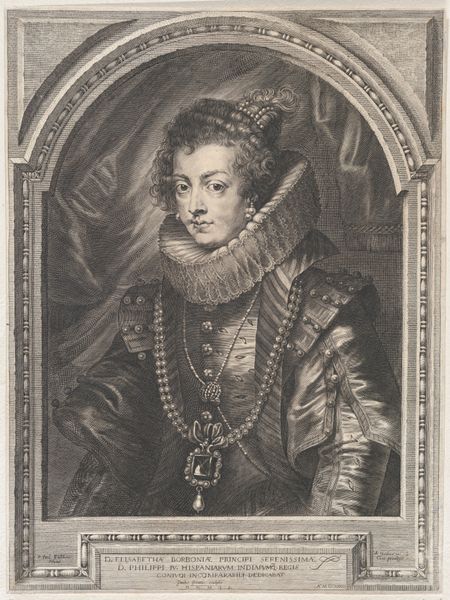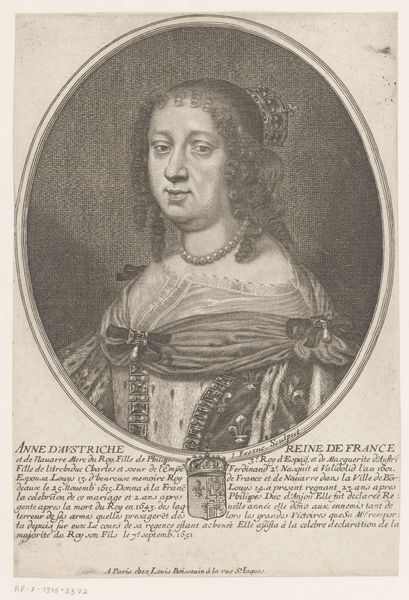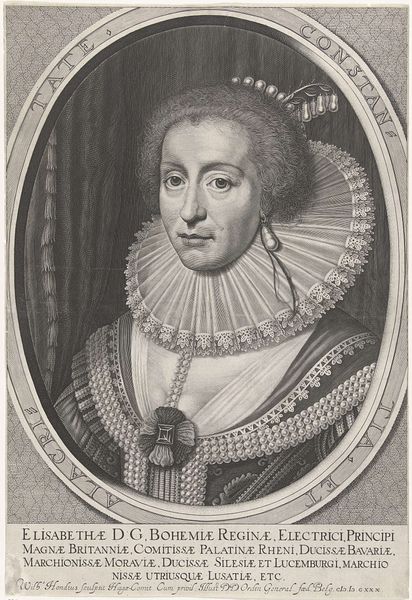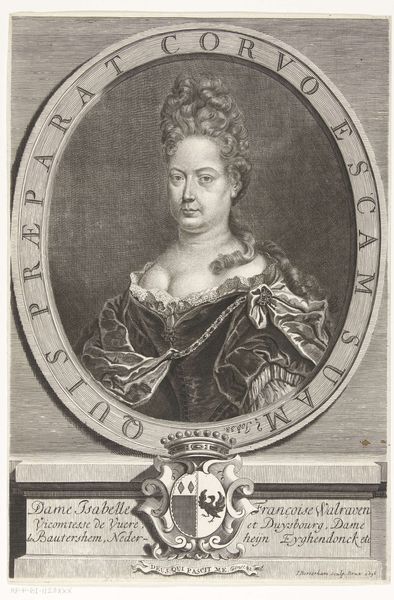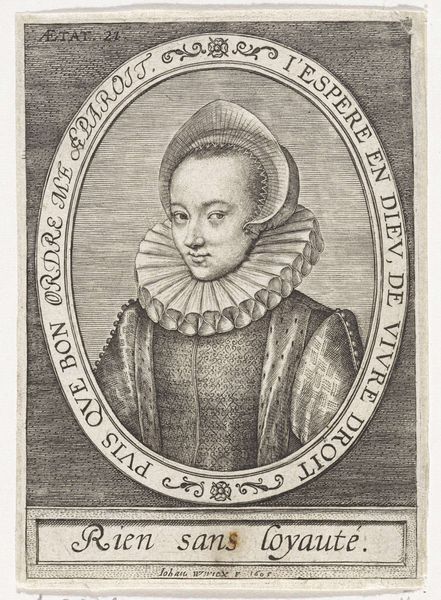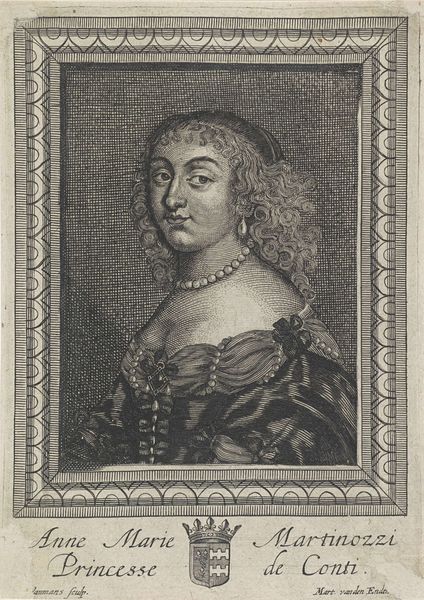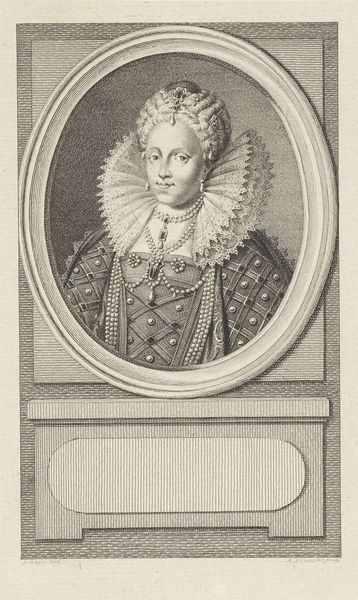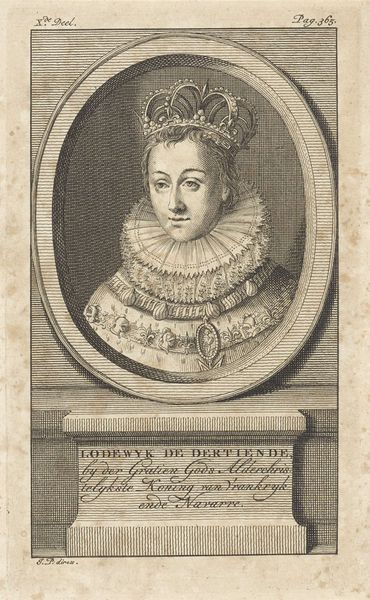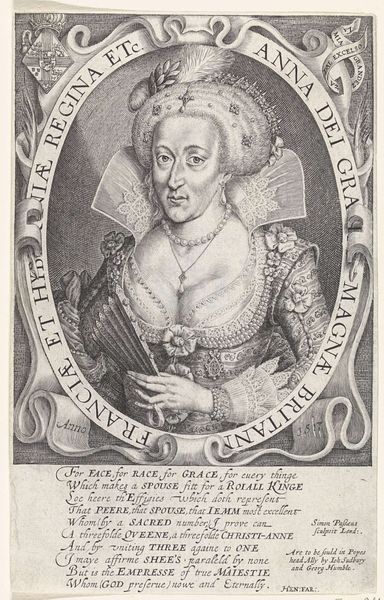
Portrait of Isabella Clara Eugenia, Infanta of Spain 1645 - 1655
0:00
0:00
drawing, print, engraving
#
portrait
#
drawing
#
baroque
# print
#
engraving
Dimensions: Sheet (Trimmed): 6 3/4 × 4 5/8 in. (17.1 × 11.7 cm)
Copyright: Public Domain
Curator: Today, we're observing "Portrait of Isabella Clara Eugenia, Infanta of Spain," a print dating roughly from 1645 to 1655, made by Pieter de Jode II, currently housed here at the Metropolitan Museum of Art. Editor: It strikes me immediately how rigid the composition feels, doesn't it? The heavy lines of the engraving create such a defined, almost architectural structure around her face, contrasting her delicate features. Curator: Yes, the engraving, typical of the Baroque period, served a dual purpose, celebrating powerful figures and solidifying their image. Isabella Clara Eugenia was a sovereign in her own right, so having these kinds of images circulating was crucial. Note how the inscription in Latin and French reinforce the message about her nobility and dynasty. Editor: I see. And her ruff, the pearl necklace, and ornate crown draw the eye. But there is also this emphasis on detail that almost renders the composition static; the geometric patterns and elaborate trim feel as important as her portrait. Curator: True, there's a calculated blend of display and statecraft. These images bolstered the Habsburg dynasty's presence across Europe, offering more than just a likeness; it communicates authority, status and pedigree in a time of political maneuvering. Editor: Perhaps that stillness you noted then works, as you described, to project the image of immutable power and composure in her position. There is little to soften the hard work put into the lines forming her dress and framing her face; every pen stroke seems considered for the sake of solidifying her persona. Curator: Exactly. Pieter de Jode II had a particular skill in creating that kind of permanent vision, where his style really captures that balance of artistic form and political communication during a fascinating era. Editor: It leaves me contemplating the act of seeing then—who controlled these images, what message were the masses meant to gather, and what we now gain in looking from such a far-removed place. It’s much more than meets the eye initially. Curator: Precisely. That dynamic tension between artistry, dissemination, and socio-political power shapes the way we approach an artwork of this kind.
Comments
No comments
Be the first to comment and join the conversation on the ultimate creative platform.
